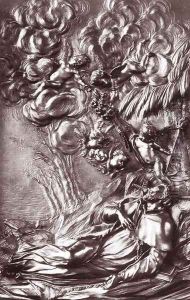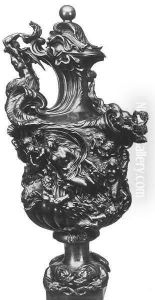Massimiliano Soldani Benzi Paintings
Massimiliano Soldani Benzi was an Italian artist, predominantly recognized for his work as a sculptor and medallist. Born in Montevarchi, near Arezzo, in the Grand Duchy of Tuscany in 1656, he emerged from the Baroque period, a time when art was characterized by dramatic expression, deep color, and intense light and shadow. His contributions are often celebrated for their intricate details, emotional depth, and the seamless blend of classical themes with the theatricality of the Baroque.
Soldani Benzi's artistic journey began under the tutelage of the Flemish sculptor Ferdinando Tacca in Florence, which was then a vibrant center for the arts and culture. His prowess and skill soon caught the attention of the Medici court, leading to his appointment as the director of the Grand Ducal Mint. This position allowed him to experiment with and perfect his techniques in bronze casting and medal making, fields in which he would achieve significant acclaim.
Throughout his career, Soldani Benzi undertook commissions that spanned both religious and secular themes, creating works that were sought after by patrons across Europe. His sculptures and medals were praised for their meticulous craftsmanship and the ability to convey complex narratives through metal. Among his notable works are his bronze reliefs and statues, which showcase his mastery over the medium and his capacity to infuse vitality into his subjects.
Despite his success, Soldani Benzi's works were somewhat overshadowed by his contemporaries in the bustling art scene of the Baroque era. However, his contributions have been reassessed and valued more deeply in recent years, highlighting his role in the development of late Baroque sculpture in Italy. His ability to manipulate bronze and create dynamic, expressive works that resonate with the viewer has secured his legacy within the annals of art history.
Massimiliano Soldani Benzi passed away in 1740 in Florence, leaving behind a body of work that continues to be studied and admired for its artistic merit and historical significance. His career reflects the vibrant cultural milieu of Baroque Italy and his enduring influence on the sculpture and medallic art forms.

